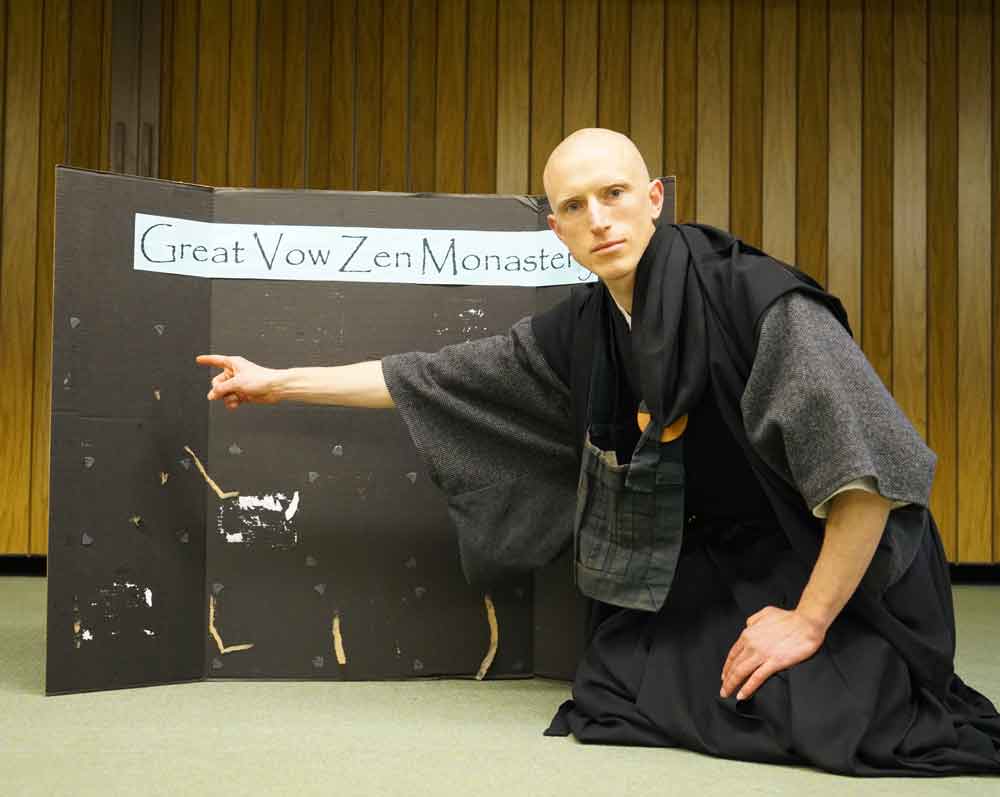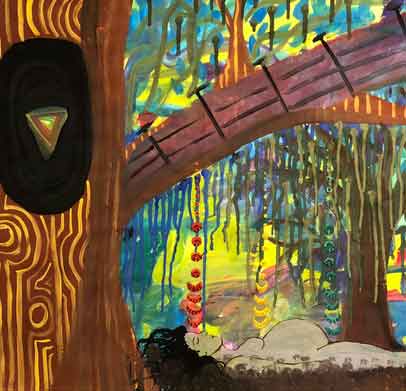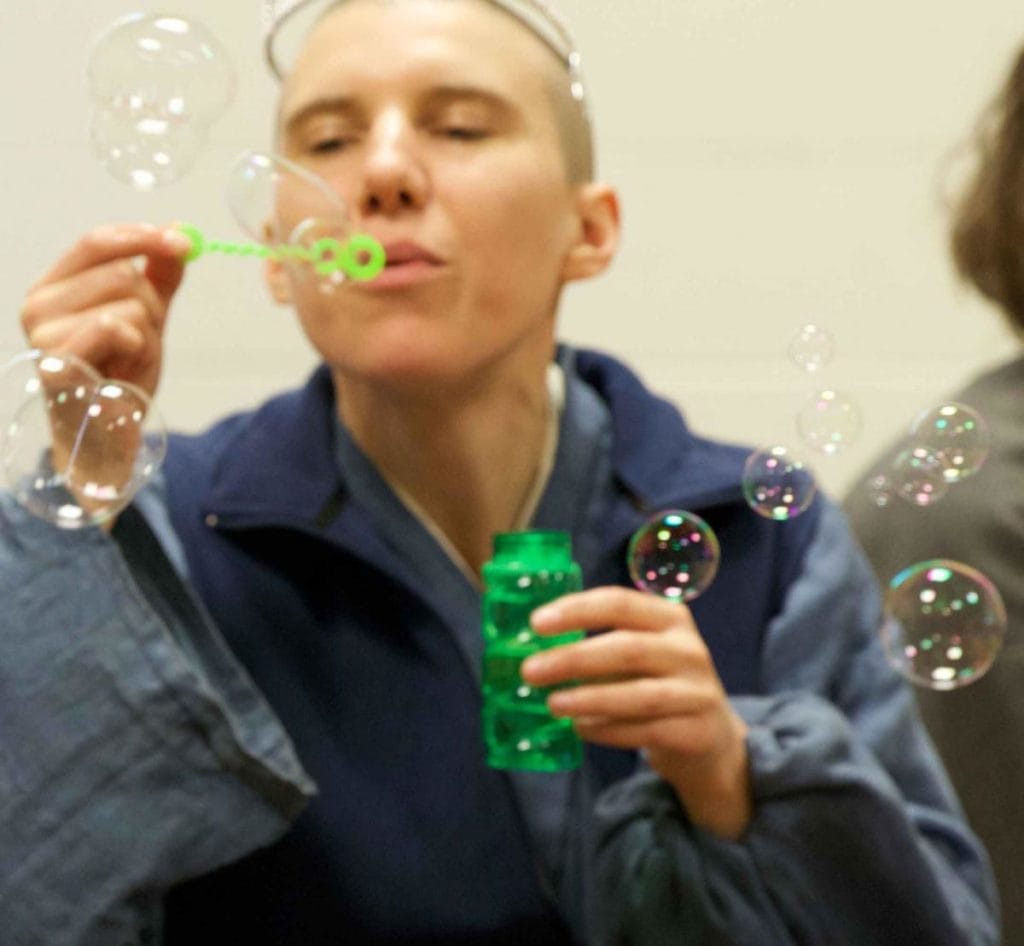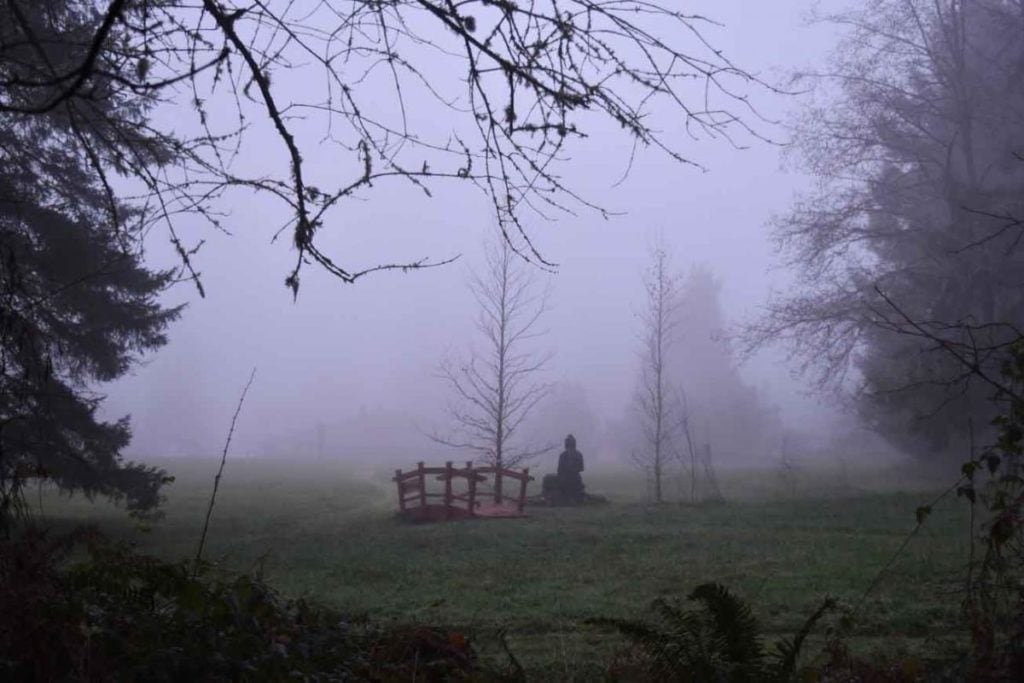There is a thread flowing through you connecting you moment to moment. —Stewart Cubley
Over the past seven years, we have been hosting and participating in an annual event called the Painting Experience, led by Stewart Cubley. Hogen Roshi was actually the first one to become interested in it, after observing the transformation of one of his close students through the process.
How creative process is spiritual practice and its direct links to our zen practice may not appear obvious at first. But when entered intentionally one quickly comes into direct and immediate contact with one’s self, the act of creation and the barriers that appear to stand in the way of the spontaneous expression of the whole universe manifesting through one’s heart.
Stewart gave us the following principles to help guide and deepen our process —as you will see they are as much a guide for creative process, as for spiritual practice, as for living a life of intention and love.
Not Knowing —not having an agenda, not planning, not being driven by expectation, not being attached to the outcome.

Before the first stroke, the first word, the first note, or movement – everything exists in empty potential. It is also true that the mind may be full of thoughts or ideas, regrets and distractions. We enter not-knowing by settling body, speech and mind, touching into the quiet before thought. Coming to know the empty potential within our hearts, that gives rise to inspiration, that gives rise to all things. And we touch the essence of zen, not-knowing is most intimate. Throughout the process this aspect of experience is a touchstone, from which each stroke, each movement emerges.
Listening — learning to sense deeply, slowing down and taking time to be sensitive and present.
Once the mind is relatively settled, we touch into presence — an intimate listening with the heart. The blood coursing through our veins, the beating in our chest, sensations, emotions, deep feelings dance through awareness. Inspiration arises through our attention, through our listening.
Respecting — having listened, learning to take what you get. Accepting what arises and going with it, not arguing with what shows up. See everything as sacred.

In creative process, in meditation and in our lives – how often do we get into a giant struggle with liking and disliking? Moving towards what we have decided is good and pushing away what we don’t like, or don’t want to be identified with—what we simply don’t want to include. This crucial piece rests at the heart of our spiritual practice and our sense of wholeness as an individual. To accept whats arising, to allow it to express itself in our art, our writing, even our lives. This is scary because it is precisely this practice that challenges our fixed beliefs about ourselves and the world, it asks us to take a bigger position, to expand, to open, to include.
Following the Energy— learning to recognize the direction that is given to you. There is a thread flowing through you connecting you moment to moment.

Stewart also calls this principle affinity. In Zen we say there is an appropriate response arising every moment. We call this response spontaneity or compassion. When the mind is clear, the heart can simply respond without deliberation or hesitation, without reflection or lag. We are absorbed in our art, in the Great Activity of our life, in creative flow. We resonate deeply with the heart of all things, and know each unique expression as it truly is.
Working With Difficulty—understanding the relationship of creative blocks to the inner critic, and how these challenging times are portals to new dimensions.
No matter what we do we will encounter difficulty. It is a sign that we are living a life of transformation, evolution and maturation. Every new twist on the spiritual journey touches our deep and intimate fear of the unknown. And so our defenses arise. Getting to know our defenses, to see them for what they are and to trust the creative potential that lies on the other side is the essence of the spiritual and creative life. The only way to know the territory and potential of the heart is to continue. To deepen. Even if it is a thousand miles of black paint, or a marathon in quick sand, we taste the greatness of being in these spiritual and creative challenges.

Not Interpreting—knowing the ways in which the mind loves to create a narrative and get caught by story.
“Narratives emerge,” Stewart says, “but pay attention, is the story leading the painting or is the painting leading the story.” When we let the story take over, we get bored. It’s like rehearsing a conversation endlessly, and then when you finally sit down to talk everything rehearsed feels dead and irrelevant. When we let our stories control our lives, we live a false or dead life — no longer in touch with the exhilarating though at times terrifying sense of not-knowing. We conceptualize a life, usually a less interesting life then the one we are actually directly experiencing right now. Insights will emerge in a fresh mind, one that is open to potential and in touch with the immediacy of the moment.
Completion is what it means to find the true end point to a painting or process. It is an internal knowing.

How do we know when a particular life process, period or work is complete? What are the internal cues that tell us we need to evolve in a situation, view point, relationship? This principle also asks us if we can see completion in each moment of experience, complete and constantly transforming — one of the great Zen paradoxes. For me, if there is reactivity I know that I am not in touch with what is already complete, and also not in a place to give up on the situation or process before me. Stewart asks, “Is the journey truthful? Is it over?” Completion is as much a state of heart as a deep practice, one that I hope we are all in touch with throughout this creative process called life.
Interested in learning more about the Painting Experience or Stewart’s Teaching, check out their website.
